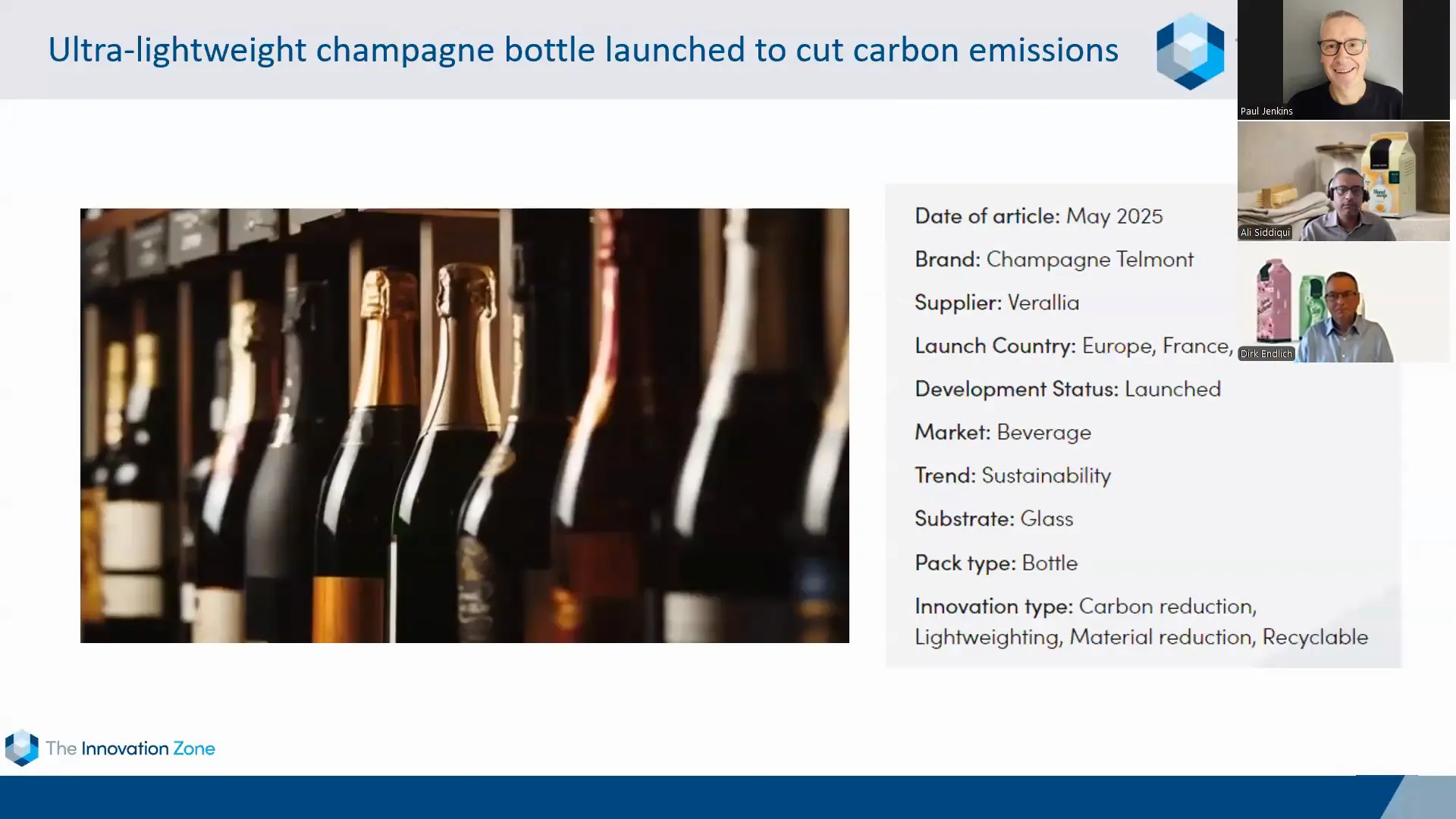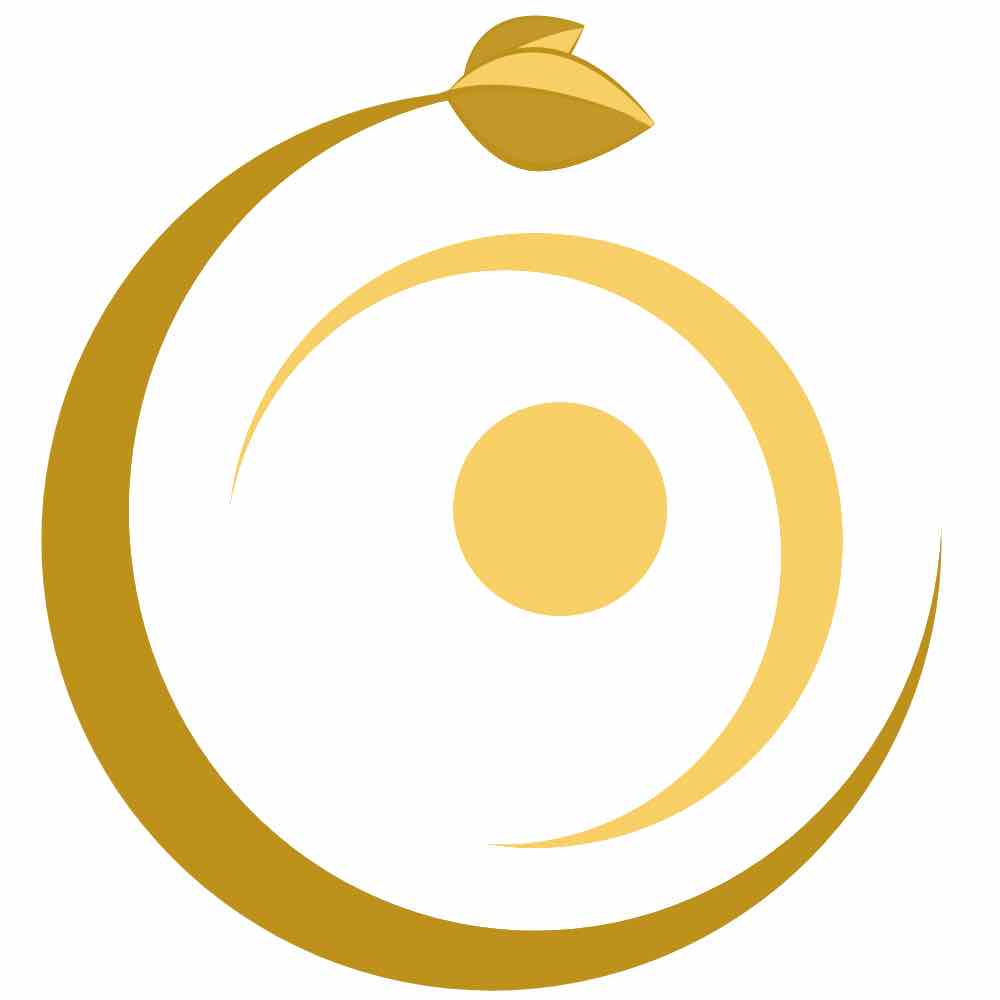Published on: June 12, 2024
Discover the latest advancements in sustainable packaging through an insightful session hosted by Paul Jenkins, Managing Director of ThePackHub. This article explores key innovations in carbon reduction packaging, featuring expert insights from Dirk Endlich and Ali Siddiqui of Elopak. These industry leaders share how fiber-based packaging solutions and other innovations are driving significant environmental benefits across various sectors.
Watch the full video on ThePackHub YouTube channel: Carbon Reduction Packaging Innovations
Table of Contents
- About the Speaker
- Summary of Key Themes
- Unique Insights and New Information
- Applying the Knowledge
- Important Keywords
- Main Points Explored in the Webinar
- Frequently Asked Questions (FAQs)
- Summary and Final Thoughts
- Key Figures and Resources
About the Speaker
Paul Jenkins is the Managing Director of ThePackHub, a leading UK Packaging Innovation consultancy. With nearly a decade of experience curating packaging innovations worldwide, Paul offers an authoritative perspective on sustainable packaging trends and technologies. His expertise is complemented by insights from Dirk Endlich, Vice-President of Elopak’s P2C division, and Ali Siddiqui, Senior Key Account Manager at Elopak, who bring deep knowledge in fiber-based packaging and carbon reduction strategies.
Summary of Key Themes
- Exploration of carbon reduction innovations across packaging sectors including food, beverage, beauty, pet care, and pharmaceuticals.
- In-depth discussion on Elopak’s fiber-based DPAC cartons and their significant carbon footprint advantages over traditional plastic packaging.
- Real-world case studies demonstrating successful implementation of sustainable packaging solutions.
- Future outlook on packaging recyclability, cost implications, and regulatory trends.
Unique Insights and New Information
This session stands out by juxtaposing traditional lightweighting efforts—such as the Champagne Telmont bottle—with transformative carbon reduction solutions like Elopak’s DPAC fiber cartons that offer up to 78% lower carbon footprints. Unlike many discussions limited to concept or pilot phases, this webinar showcases wide-ranging, market-ready innovations impacting diverse industries. The video uniquely combines technical data, consumer insights, and practical implementation strategies, providing a holistic view of sustainable packaging evolution.
Applying the Knowledge
Brands, manufacturers, and sustainability professionals can leverage insights from this session to make informed packaging decisions that align with environmental goals and consumer expectations. Whether considering lightweight glass bottles, recyclable airless beauty bottles, or fiber-based cartons for home care products, the examples and data provide actionable guidance for reducing carbon footprints while maintaining product integrity and market appeal.
Important Keywords
Carbon reduction, sustainable packaging, lightweighting, fiber-based cartons, recyclability, plastic reduction, refillable packaging, bioplastics, circular economy, packaging innovation, Elopak, DPAC cartons, carbon footprint, home and personal care packaging.
Main Points Explored in the Webinar
1. Innovations Across Multiple Sectors Drive Carbon Reduction
The webinar highlights a broad spectrum of packaging innovations targeting carbon reduction. For example, Champagne Telmont introduced the world’s first ultra-lightweight standard champagne bottle, reducing the bottle weight from 835 grams to 800 grams, cutting carbon emissions by 4% per bottle without compromising quality or pressure resistance. This innovation, debuting in the U.S. on Earth Day 2025, exemplifies lightweighting challenges in sectors where packaging weight is perceived as a quality indicator.

In the beauty sector, Abta Beauty and La Baratoire SVR launched recyclable airless bottles made from post-consumer recycled plastic designed to protect sensitive formulations while reducing CO2 emissions through in-house assembly. L’Oreal’s push for refillable packaging across its brand portfolio demonstrates a strategic approach to reduce packaging intensity and material impact by replacing traditional packaging with lower-footprint alternatives.

Pet care also sees innovation with Nestlé Purina Petcare’s recyclable canisters made entirely from mechanically recycled PET, expected to eliminate over 500 metric tons of virgin plastic annually, and reduce CO2 emissions by 694 metric tons.
2. Elopak’s Fiber-Based DPAC Cartons: A Game-Changer in Home and Personal Care Packaging
Dirk Endlich and Ali Siddiqui introduce Elopak’s DPAC cartons, emphasizing their low plastic content and high renewable fiber content. For instance, a one-liter DPAC carton contains only 8.9 grams of plastic—mostly in the lining, spout, and closure—compared to 70 grams in a typical HDPE bottle and 45 grams in a PET bottle. This represents an 80-90% reduction in plastic use.

Additionally, the square footprint of DPAC cartons enhances palletization and logistics efficiency, allowing more than twice the volume per truckload compared to HDPE bottles, and outperforming plastic pouches. This combination of reduced plastic and optimized logistics leads to a significantly lower carbon footprint.
Independent life cycle assessment by Anthesis revealed that DPAC cartons have a 78% lower carbon footprint than polypropylene bottles and 36% lower than plastic monolayer pouches, positioning DPAC cartons as a superior sustainable packaging solution.

3. Market Adoption and Consumer Acceptance
Though fiber-based cartons are less common in home and personal care categories, they have gained strong traction in Scandinavian markets, with brands offering a broad size range from 500 ml to 2 liters. Notable adopters include Unilever’s Persil and Comfort brands in the UK, and Ferrimax in Spain, demonstrating expanding acceptance and market availability.

Consumer studies indicate familiarity with carton packaging from milk and juice categories, with positive acceptance for personal care products. This opens opportunities for brands to differentiate their products and meet sustainability goals simultaneously.
4. Recyclability and Regulatory Trends
Elopak cartons are designed to be recyclable, with collection infrastructure already established in many regions. In the UK, 69% of local authorities collect cartons via household recycling, with another 25% offering bring banks. Upcoming legislation (Simpler Recycling) mandates carton collection by 2026, promising near-universal recycling access.
Recycling processes separate fiber from plastic and aluminum layers, repurposing fibers in new paper products and plastics and aluminum into new materials, achieving almost 100% recycling rates in countries like Germany.
5. Cost and Logistics Benefits of Carton Packaging
Cartons are delivered flat to production facilities, allowing roughly 20,000 units per pallet compared to 800 plastic bottles, drastically reducing transportation volume and costs. Post-filling, cartons also offer 50% more product volume per transport pallet than plastic bottles, lowering outbound logistics expenses.
Considering total cost of ownership (TCO), carton packaging often provides a financial advantage over plastic alternatives when factoring in logistics, recycling, and sustainability benefits.
6. Future Developments: Paper Closures and Enhanced Barriers
Elopak is actively developing paper-based closures for both food and personal care cartons to further reduce plastic use and carbon emissions. While only 5% of current SKUs require aluminum barriers, improvements in polyethylene barriers are expected to eliminate the need for aluminum in most cases without compromising shelf life.
7. Addressing Accessibility and Co-Packing
Accessibility is a recognized challenge in packaging design. Elopak tests closures extensively to ensure ease of use across age groups, including seniors and children. Isolated incidents of difficult openings are addressed individually.
For startups and small brands, Elopak offers co-packing solutions through qualified partners in Europe, enabling access to sustainable carton packaging without large-scale investment in filling equipment.
Frequently Asked Questions (FAQs)
- What are the key themes of the video?
The video explores carbon reduction innovations in packaging, focusing on lightweighting, plastic reduction, fiber-based cartons, recyclability, and market adoption across sectors. - What new information does this video provide compared to existing content?
It provides concrete data on carbon footprint reductions from DPAC cartons, real-world examples of adoption, and insights into the logistics and recyclability infrastructure supporting sustainable packaging. - What makes this video unique?
The integration of technical, consumer, and regulatory perspectives with detailed case studies across diverse industries offers a comprehensive and practical view of sustainable packaging innovation. - How can viewers apply the information shared?
Brands can evaluate the benefits of switching to fiber-based cartons or other innovations, understand cost and logistics implications, and prepare for evolving recycling regulations.
Summary and Final Thoughts
This comprehensive overview of carbon reduction packaging innovations underscores the importance of multi-sector collaboration and innovation to meet environmental challenges. From Champagne Telmont’s lightweight bottle to Elopak’s revolutionary DPAC cartons, the packaging industry is evolving rapidly towards more sustainable, recyclable, and lower-carbon solutions.
The main message is clear: sustainable packaging is not just a trend but a necessity, and fiber-based cartons represent a powerful tool for brands to significantly reduce their environmental impact while maintaining product quality and consumer appeal.
This video is essential viewing for packaging professionals, sustainability managers, brand owners, and anyone interested in the future of eco-friendly packaging solutions.
Key Figures and Resources
| Figure/Link | Description |
|---|---|
| Champagne Telmont Bottle | Ultra-lightweight champagne bottle reducing weight by 35g, cutting carbon emissions by 4% per bottle. (Timestamp: 03:02) |
| Elopak DPAC Carton Plastic Content | One-liter DPAC carton contains 8.9g plastic vs 70g in HDPE bottles, enabling 80-90% plastic reduction. (Timestamp: 21:04) |
| Carbon Footprint Comparison | DPAC cartons have 78% lower carbon footprint than polypropylene bottles and 36% lower than plastic pouches. (Timestamp: 26:08) |
| ThePackHub YouTube Channel | Official channel hosting the webinar and other packaging innovation content. |
| Dirk Endlich LinkedIn | Connect with Elopak’s VP for insights and queries about fiber-based packaging. |
Ready to dive deeper into carbon reduction packaging innovations? Watch the full video here: Carbon Reduction Packaging Innovations. Don’t forget to share your thoughts in the comments below and subscribe to our blog for more in-depth analyses like this!
This article was created from the video Carbon reduction packaging innovations with the help of AI.
